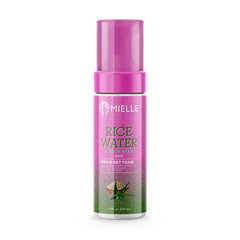By Toia Barry
Even though there’s been an influx of women embracing their natural texture in the past few years, many are still undecided. Some, having not seen their natural texture since toddler years, struggle with learning how to deal with it, especially in the transitional stage. Is this you? Read on for some helpful advice.
Before anything else, you want to make sure you’re ready to take this journey transitioning to natural hair. Transitioning to your natural texture will only be as hard as you make it. Yes, there will be learning and a trial and error process involved. But by keeping in mind that consistency is the key to your success, you’ll be on your way to a smooth transition.
Here are three practices that’ll help you along the way of your transition.
Handle With Care
When that new hair starts coming in, you will quickly realize that dealing with two textures requires a lot of TLC. The line of demarcation – which is defined as the point where both textures meet – is especially fragile, so you must be gentle when manipulating your hair in this state.
We all know that tangles are inevitable, and you may be tempted to just rip through them, especially on wash day. Don’t! A wide-tooth comb will be your best friend while transitioning! This will help you gently work through any knots and tangles with minimal, if any, breakage. Washing your hair in sections will also help prevent the hair from getting matted and minimize the chance of tangles.
Moisturize Regularly
Speaking of wash day, regularly infusing your hair with moisture will give you that extra insurance for manageable hair while transitioning. A product with some slip to it, like Mielle’s Detangling Co-Wash, can add moisture while gently cleansing your hair. It will also help you work through the tangles that come with two textures.
Deep conditioning is also very important. Our Babassu Oil & Mint Deep Conditioner replenishes moisture but also adds protein, which is essential for strengthening your fragile transitioning strands.
Because the natural oils from the scalp don’t easily travel through the entire shaft of curlier textured hair, adding some extra steps in your routine to moisturize after washing is recommended. A leave-in conditioner, followed by an oil and then your styling product, will keep your roots from becoming super dry.
Wear the Right Styles
Don’t think that you’re limited to certain styles just because you’re transitioning! However, the best styles while transitioning will be those that you don’t have to touch for a few days or more. Wet sets like twist-outs, braid-outs, and rod sets blend both textures so that they are less noticeable, and each style will last a week or so.
Straightening your hair can also blend the two textures, but you should proceed with caution. Use a heat protectant to avoid permanently damaging the strands. If you want to get to know your true texture, though, it’s best to keep straightening to a minimum.
Protective styling is truly the best way to make your transitioning period count. Once the hair is moisturized, keeping it tucked away in cornrows, twists, or a low bun keeps the moisture in, meaning less manipulation for you and giving your hair its best chance to thrive until you’re ready to chop off those relaxed ends.
There’s so much more we can say about transitioning back to natural, but these are some key tips that should help you get started on your journey to a full head of textured hair!

















